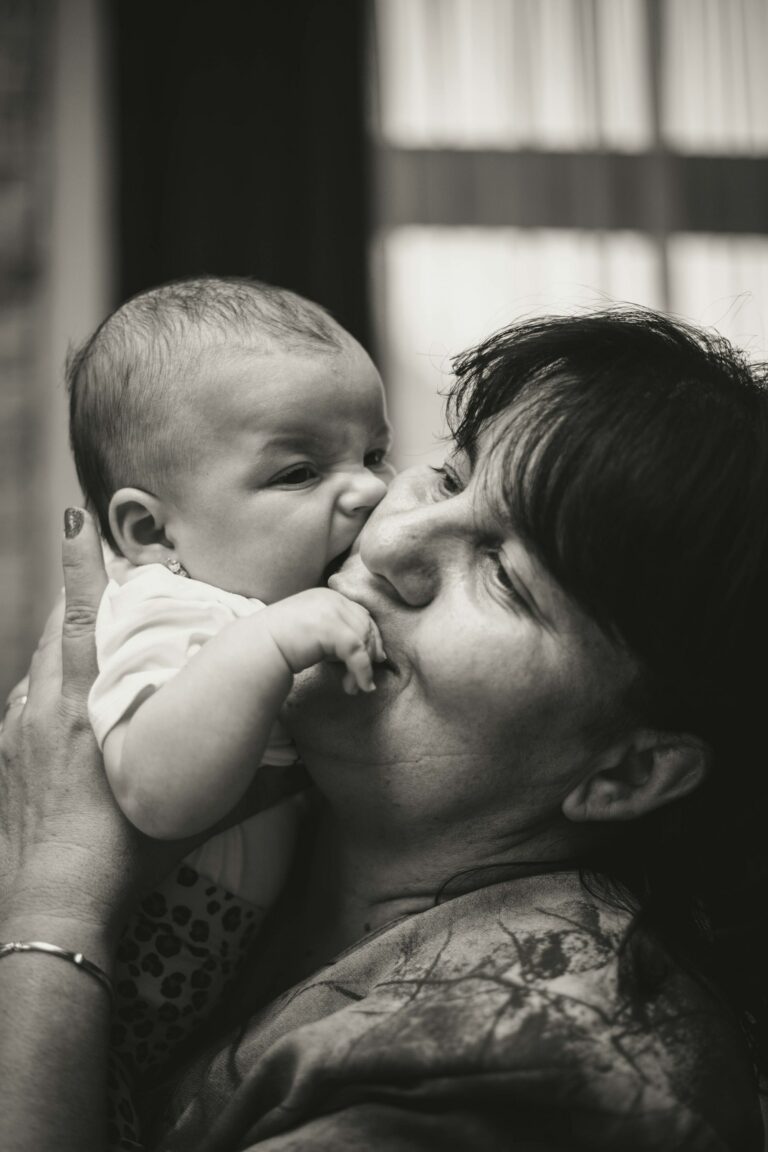A quiet room, a softly breathing infant, the gentle rhythm of a crib lullaby—yet, for so many parents, the reality behind “baby sleep” is anything but serene. Are you caught between worry and exhaustion, observing sleepless nights and unpredictable naps, wondering if your child’s patterns are on track? This concern often lingers in the minds of families, mingling questions of safety, nutrition, development, and emotional comfort. The journey through baby sleep evokes uncertainty—will tonight be a peaceful stretch, or another symphony of cries, yawns, and rocking? From the very first weeks, through those classic regressions and the endless search for effective routines, understanding baby sleep is not just a matter of time, but a need for scientifically backed advice, emotional support, and actionable strategies. Here, you’ll find a panorama of perspectives: the science behind shifting rhythms, medical safety guidelines, practical tips, and reassurance that, even when your nights are long, solutions and guidance are close at hand.
What Is “Normal” Baby Sleep and How Does It Evolve?
First, consider this: baby sleep is not a miniature version of adult sleep. Babies unfold their sleep like intricate embroidery, shaped by age, feeding needs, and neurodevelopment. For newborns, counting 14–17 hours of rest in a 24-hour cycle might sound comforting—except that these hours unravel in scattered snippets, unpredictable as monsoon showers. Why? Because the newborn’s circadian rhythm, the biological clock aligning sleep and wake, is still under construction.
Early on, active sleep (akin to REM in adults) dominates. This restless stage, punctuated by little twitches and eye movements, is believed to fuel brain growth and cellular repair. Non-REM periods are quieter, with soft, deep breathing—yet even these don’t last long. The dance between wakefulness, feeding, and changing often takes precedence over duration.
Always place your baby on the back for sleep, on a firm, flat mattress with no pillows or soft toys, to significantly reduce the risk of Sudden Infant Death Syndrome (SIDS). Until one year, maintain room-sharing (same room, different sleep surfaces) to promote both safety and parental ease—resist the temptation to bed-share even during the endless nights.
As three to four months pass, you’ll notice a subtle transition—sleep cycles lengthen, stretches at night might reach 6–8 hours, and daily naps start to settle into recognizable patterns. At this stage:
- Night stretches might last, with luck, up to 8 hours, but night feeds remain common.
- Daytime may give you three or four naps, totaling 4–5 hours.
- The window of calm wakefulness—when your baby is content and interactive—can extend up to two hours.
The numbers serve as guidance, but the real clue lies in observing your own child’s sleep cues, fussiness, and contented wakefulness. Is your baby alert, feeding well, and growing? Celebration—things are on track, no matter what others say about “sleeping through the night.” These patterns continue evolving, with 14–15 hours of total sleep at 3–6 months and about 12–14 hours for toddlers aged 1–3, usually including a predictable afternoon nap.
Developmental Leaps, Sleep Regressions, and the Brain
Just as you savour those first quiet nights, a new challenge often arrives around four months—the famed “sleep regression.” But is it truly regression? Not at all! Rather, it’s a neurodevelopmental leap. The maturing brain suddenly starts differentiating day and night. Memory circuits, emotional awareness, and motor patterns begin to wire up at lightning speed. This surge in cognitive growth can temporarily disrupt sleep, unleashing frequent wakings or unsettled naps—sometimes out of hunger, sometimes out of a fresh need for comfort or reassurance.
- Sleep cycles now resemble adult architecture, lasting 40–60 minutes, with deep slow-wave phases.
- At “partial arousals” between cycles, your baby may stir, seeking the same conditions that helped them fall asleep—be it a warm hug, a gentle sway, or the sound of your voice.
A cascade begins: miss the sweet spot of sleep readiness, and overtiredness ensues—naps shorten, fussiness grows, and night waking becomes more frequent. Here, a keen eye for subtle signs—rubbing eyes, yawning, losing interest in toys—makes all the difference.
It’s not unusual for a baby who previously slept soundly to suddenly wake up every two hours, seeking soothing, feeds, or mere proximity. Navigating these nights with calm, patience, and consistency, while adjusting daily routines, can help transition through these stormy periods.
Baby Sleep Cycles Demystified
What puzzles many is why babies wake up so frequently, even after just an hour. Unlike adult sleep cycles (90–120 minutes), baby sleep cycles can be as short as 50 minutes. REM still dominates early infancy, with its mysterious link to neuroplasticity and brain maturation. As your child grows, these cycles extend, and the ratio of deep to light sleep shifts—helping consolidate longer night stretches.
But between every cycle, “partial arousals” are natural. If your baby has learned to fall asleep only with intense rocking or feeding, they may wake looking for those same cues. Here lies the heart of many sleep challenges: forming positive, independent sleep associations early on.
Recognise the signs of sleep readiness—yawning, rubbing eyes, fussing, or simply gazing away from stimulation. Build predictability into the day, alternating periods of daylight exposure and interaction with calm, dim environments at night.
Creating Healthy Baby Sleep Routines
Now, how does one shape a good routine without falling into rigid scheduling? For newborns, flexibility is your ally—feeding and short play, followed by peaceful winding down. By three to six months, introduce simple bedtime rituals: perhaps a warm bath, a lullaby, or a story—always in the same order. Lay your baby down drowsy but awake—this fosters self-settling and reduces dependence on parental intervention.
From six months onwards, aim for predictable bedtimes between 6–8 pm. Maintain gentle but firm boundaries, with familiar signals: a sleep sack, dimmed lights, and a soothing touch. For toddlers, daily structure matters—consistent nap times and bedtime help anchor their sense of security.
Documenting your baby’s sleep habits—a simple notebook suffices—enriches conversation with your pediatrician and helps you spot changes in rhythm, quality, and duration.
Supporting Your Baby Through Sleep Regressions
The so-called “regressions” are really the signs of blossoming development. During these sensitive periods, refine and reinforce habits:
- Regular sleep environment: keep both naps and night sleep in the same safe crib. Reserve bright or busy daytime for play, darkness for rest.
- Minimise distractions: noise, light, or uncomfortable room temperatures can all delay sleep onset.
- Rituals: even repeated touch or a particular lullaby becomes a powerful signal that rest awaits.
- Schedule days around biological sleep “windows”: optimal nap times are 1.5–2 hours after waking, commonly between 9–10 am and 12–2 pm, with night sleep rarely starting after 8 pm.
Encourage partial independence: as self-soothing emerges around four months, pause briefly before intervening at each waking. If comfort is needed, offer reassurance—stroking, humming, or a gentle “shhh”—and gradually dial back extra help as your child gains confidence.
Safe Sleep: Evidence-Based Guidelines
What keeps babies secure at night is neither complex nor expensive. ABC always applies:
- Alone: each baby in their own crib or bassinet, separate from parents’ bed.
- Back: always on the back for every sleep, nap or night.
- Crib: a firm, flat mattress with nothing extra (no bumpers, pillows, blankets, toys).
Maintain a comfortable room temperature (20–22°C), steering clear of overheating—overbundling is a frequent pitfall. White noise can help mask sudden external sounds but should be kept at low volume. Breastfeeding and, when appropriate, pacifier use have both been associated with lower SIDS risk, adding a layer of practical safety to your bedtime routine.
Resist any product that offers “safe sleep” without pediatric endorsement—weighted blankets, soft mattresses, and elaborate sleep-positioners have not been proven effective or safe. Stick with certified sleep sacks or wearable blankets until at least your baby’s first birthday, or as your doctor advises.
What Shapes Baby Sleep? Feeding, Growth, and More
A baby’s sleep is a delicate interplay of biology and environment. Feeding type matters—breast milk, more quickly digested, often means more night wakings than formula. But all babies vary, and night feeds are the norm until at least the first year. Solids, typically added around six months, rarely grant miraculous longer sleep—sometimes they can upset digestion and impair rest, especially in the adjustment phase.
Discomforts like colic or gastroesophageal reflux disrupt sleep—consult your pediatrician for guidance and never use tummy sleeping to manage reflux. Teething, too, may lead to transient waking; offer safe, gentle gum massage or doctor-approved remedies.
From six months onward, separation anxiety may disrupt nights. Consistency in routines and reassurance—returning calmly, offering comfort, never making sleep punitive—are effective responses.
Addressing Sleep Challenges: Timing, Regression, and Associations
Does your child wake often at night? Rise early in the morning? Find naps brief or unreliable? These realities can test parental endurance. Baby sleep is not linear—every new skill (rolling over, crawling, standing) can stir up unpredictable patterns. Regression phases, notably around 4, 8–10, and 12 months, ebb after a few weeks with patient support.
Many challenges stem from sleep associations—if a baby falls asleep only while being rocked, or when fed, they may rely on that pattern during partial arousals. Gently encourage your child to settle in their crib, sleepy but awake, offering comfort gradually, rather than immediate intervention at every cry.
If sleep issues intensify or writing patterns persist beyond several weeks, consult a pediatrician—sometimes underlying medical concerns merit discussion or tailored intervention.
Positive Strategies to Improve Baby Sleep
Wondering how to foster better baby sleep without tears and struggle? Science and experience suggest a few simple steps:
- Establish a bedtime ritual (bath, changing, quiet time, lullaby) and keep it unchanged each night.
- Place your baby in bed drowsy but still awake—it’s the golden rule for nurturing self-soothing.
- Offer comfort when needed: gentle rocking, soft white noise, approved pacifier use.
- From six months, introduce “transitional objects” like a soft cloth or toy—always adhering to safety guidelines.
- Keep feeds and comfort calm, in low light, to avoid full arousal.
- During daytime, encourage outdoor exposure and lively interaction to reinforce naturally arising circadian rhythms.
- Maintain patience—routines take time to yield results, and small improvements build progress.
Sleep Training Methods: Choosing What Fits Your Family
Perhaps you’ve heard of “Ferberizing,” “no-tears,” “chair” or “graduated extinction” methods. Which is right? There is no single path.
- Ferber Method introduces brief, timed periods for baby to try self-settling before comfort, with improvements often seen quickly but with emotional challenge for some.
- Gradual Methods—stepwise withdrawal of help, nurturing autonomy at a gentle pace. Longer road, but less stressful.
- No-tears approaches stay close, soothe until drowsy, and slowly nurture independence.
Consult your pediatrician before embarking on intensive strategies, particularly if medical or feeding concerns exist. Adapt your approach in function of your child’s temperament and your family’s values—the goal is both sleep and emotional well-being.
Myths and Facts About Baby Sleep
Many beliefs circulate around baby sleep: should a newborn “sleep through the night”? Not really—frequent waking is part of normal development. Stomach sleeping? Firmly discouraged due to SIDS risk. Room-sharing, yes; bed-sharing, no—prioritise safety. Don’t be swayed by commercial claims—trust recommendations grounded in scientific evidence.
Remember: every baby’s temperament and needs are unique—watch your child closely and trust well-established guidelines. Consult reliable sources, like your pediatrician or references such as the American Academy of Pediatrics, for tailored reassurance.
Supporting Parents: Self-care and Practical Tips
Parental fatigue—sometimes it feels endless, doesn’t it? Sharing night duties with your partner, asking friends or relatives for daytime help, and accepting that perfection is not the standard—these help build resilience. Sometimes, even ten minutes of rest or a nourishing meal can make the difference. If exhaustion leads to irritability or sadness, reach out to your doctor for support—you deserve care, as much as your child does.
Nurturing yourself is part of nurturing your baby. Over time, baby sleep patterns stabilise, routines click, and peaceful nights become less rare.
Key Takeaways
- Baby sleep unfolds in dynamic, changing patterns; no one formula suits all.
- Safety first: always place your baby on the back, in a clutter-free crib, at an optimal room temperature.
- Listen closely to your child’s unique signals—alertness, mood, growth—these matter more than any chart.
- Most challenges—night wakings, regressions, separation anxiety—are temporary, eased by patience and structured routines.
- Multiple strategies exist: choose those that suit your family’s temperament, values, and circumstances.
- Never hesitate to consult healthcare professionals regarding persistent difficulties or worries.
- Empower yourself with credible information, and don’t underestimate the power of small changes.
- For tailored advice and free health questionnaires for children, consider downloading Heloa’s application.
Questions Parents Ask
How can I help my baby distinguish between night and day?
Newborns often have their days and nights mixed up. Expose your baby to natural daylight, play, and activity during daytime hours, then create a calm, dim environment at night. Use quiet voices and minimal interaction at night feeds or diaper changes. This subtle contrast helps your infant begin to adjust, and with gentle repetition, the rhythm of baby sleep will gradually follow.
Are sleep products like white noise machines or special sleep sacks really helpful?
Many parents have found white noise machines or sleep sacks useful. White noise creates a gentle background hush, drowning out household noises and resembling the whoosh of the womb. Sleep sacks provide a secure, comfortable alternative to loose blankets. Use only products approved by your healthcare provider, and ensure they meet current safety guidelines before including them in your baby sleep routine.
What are signs that my baby is overtired, and what can I do about it?
Babies show subtle and not-so-subtle signs: rubbing eyes, turning heads away, becoming unusually irritable, or even suddenly hyperactive. When you notice these signals, shift calmly to your routine—dim lights, soft sounds, slow movements—soothing your baby towards sleep. Consistent observation helps you catch the right moment, making bedtime much smoother. Remember, this takes time—every parent and child learns together along the way.
Further reading:









